Felid (cat family) evolutionary research initially focused on studying fossils, which are often difficult to find and evaluate. New DNA testing methods and other tools have helped scientists learn more about felid evolution and the relationship between different species.
In 2006, genetic research on felids (cats) was conducted using DNA from 38 cat species. Based on the study, the 38 species were divided into eight lineages (groups) that belonged to the same evolutionary line, had common ancestors, and shared similar characteristics
The oldest group of felids was determined to be the Panterinae subfamily.
Here is a list of all eight lineages, when they diverged (split), and the appearance of the first ancestors.
| Lineage Name | Divergence – Millions of Years ago (Mya) | First Ancestor Appeared |
| Panthera | 10.8 Mya | Panthera ancestor – 6.4 Mya |
| Bay Cat lineage | 9.4 Mya | Bay cat ancestor – 5.41 Mya |
| Caracal lineage | 8.5 Mya | Caracal ancestor – 5.6 Mya |
| Ocelot lineage | 8 Mya | Ocelot ancestor – 2.9 Mya |
| Lynx lineage | 7.2 Mya | Lynx ancestor – 3.2 Mya |
| Puma lineage | 6.7 Mya | Puma ancestor – 4.9 Mya |
| Asian Leopard Cat lineage | 6.2 Mya | Leopard cat ancestor – 5.9 Mya |
| Domestic Cat lineage | 3.4 Mya | Domestic cat ancestor – 3.4 Mya |
In 2016, another study proposed slight changes to the chronology.
| Lineage Name | Appearance – Millions of years ago (Mya) |
| Panthera lineage | 11.5 Mya |
| Caracal lineage | 10.67 Mya |
| Ocelot lineage | 9.5 Mya |
| Puma lineage | 8 Mya |
| Lynx lineage | 7.5 Mya |
| Bay Cat lineage | 7.5 Mya |
| Asian Leopard cat lineage | 7 Mya |
| Domestic Cat lineage | 4.23 Mya |
Wild cat ancestors
The suborder Feliformia separated into several families 35 to 50 million years ago. Today’s cat family emerged around 25 million years ago, starting with the Proailurus and Pseudaelurus.
The Pseudaelurus appeared after the Proailurus. It was a prehistoric cat that lived in Asia, Europe, and North America approximately eight to twenty million years ago.
The Pseudaelurus, which lived in Asia 9 to 20 million years ago, is the last common ancestor of today’s Felinae and Pantherinae subfamilies. Eight cat lineages (closely related groups) evolved from this ancestor.
The first three lineages
The first three lineages to evolve were the Panthera lineage, Bay Cat lineage and Caracal lineage.
Panthera lineage
Timeline: The Panthera lineage is the oldest cat lineage. It split from the Pseudaelurus species around 10.8 million years ago, and then into seven species – lion, tiger, leopard, jaguar, snow leopard, clouded leopard and Sunda clouded leopard.
Genus: Neofelis, Panthera
Species: (Panthera) lion, tiger, jaguar, leopard, and snow leopard; (Neofelis) clouded leopard, Sunda clouded leopard
Location: Europe, Asia, Africa, North America and South America
The Panthera lineage, with its largest felids, includes both the Panthera and Neofelis genus. The lion, tiger, leopard, jaguar, and snow leopard, the largest felids on the planet, belong to the Panthera genus. The clouded leopard and Sunda clouded leopard belong to the Neofelis genus. The Panthera lineage most likely diverged from its Pseudaelurus ancestor around 10.8 years ago and then evolved into the tiger, the snow leopard, and the leopard. The lion appeared .34 million years ago.
Some similar characteristics of the Panthera genus include:
- a large and muscular body
- a big skull, long tail, and large paws
- The topside of the skull is somewhat flat or bulges slightly outward.
- a specially adapted larynx with large vocal folds enabling the lion, tiger, leopard, and jaguar to roar (snow leopards and clouded leopards don’t roar).
- the ability to prusten, also known as chuffing, a short low-intensity sound.
Some shared characteristics of the Neoflis genus include:
- elongated skull and nasal
- long upper canine teeth
- powerful jaws
Bay cat lineage
Timeline: The 2nd oldest Felidae lineage and first Felinae subfamily lineage. It separated from its Asian ancestor around 9.4 million years ago.
Genus: Pardofelis, Catopuma
Species: (Pardofelis genus) marbled cat, (Catopuma genus) Borneo bay cat, and Asian golden cat. Note: All three cats were originally considered members of the Pardofelis genus.
Location: Southeast Asia
The Bay cat lineage is the second oldest Felidae lineage to separate from its Asian ancestor. The divergence occurred 9.4 million years ago and resulted in the evolution of three species: the marbled cat, the Borneo bay cat, and the Asian golden cat. All three cats are located in Southeast Asia, where they are primarily found in forests. The Asian golden cat and bay cat separated from each other around 3.2 million years ago.
The marbled cat split from the common ancestor around 5.5 million years ago.
The Bay cat lineage members are long-tailed, short-headed cats with rounded ears and a higher skull than the Prionailurus genus. Members of the Catopuma genus (the bay cat and Asian golden cat) have reddish-brown coloration with dark markings, including stripes, on their heads.
Caracal lineage
Timeline: The third lineage to diverge from its Asian ancestor, the Pseudaelurus species, around 8.5 million years ago.
Genus: Leptailurus, Caracal
Species: (Leptailurus) Serval, (Caracal) African golden cat, caracal
Location: Africa
Three species belong to the Caracal lineage: the serval, African golden cat, and caracal. The genus name comes from the Greek “leptos” meaning “fine, delicate” and “ailouros” meaning “cat.”
The caracal lineage separated from its Asian ancestor around 5.6 to 8.5 million years ago, and found its way to Africa through a land bridge. The serval separated from its ancestor around 5.6 million years ago, and the caracal and African golden cat separated from each other around 1 to 3 million years ago.
The caracal would return to Asia when the two continents (Asia and Africa) were connected again by a land bridge. This is how the caracal became the most widespread of the three species.
The North American lineages
The formation of a land bridge between Asia and North America, likely during the last ice age, facilitated the migration of wild cats into North America and South America. This migration also resulted in some species eventually returning to Europe, Asia, and Africa.
The Ocelot lineage, Lynx lineage, Puma lineage, Leopard Cat lineage, and Felis lineage can all trace their origins back to North America.
Ocelot lineage
Timeline: The ocelot lineage evolved in North America, probably around 8 million years ago.
Genus: Leopardus
Species: Andean mountain cat, ocelot, margay, pampas cat, oncilla southern tiger, oncilla northern tiger cat, Geoffroy’s cat, kodkod
Eight species of small cats are members of the Leopardus genus and Ocelot lineage. This genus is considered the oldest small will cat lineage in the Americas.
The ancestors of the Ocelot lineage crossed land bridges from Asia to North America during the late Miocene period, between 5 and 12 million years ago. The cats in this lineage used land bridges to migrate to South America around two to three million years ago.
Wild cats that belong to this genus have:
- spotted fur, with colors ranging from off-white to ochre, tawny and grey.
- ears that are rounded with white spots
- no hair on the tip of the snout.
- nostrils that are widely separated.
- 36 chromosomes compared to the 38 of other felids.
- similarities in the base of their skulls, nasal bones, and biting/chewing muscles.
Lynx lineage
Timeline: The lynx lineage evolved around 7.2 million years ago from ancestors that migrated to North America. It appeared after the ocelot lineage.
Genus: Lynx
Species: Bobcat, Canada lynx, Eurasian lynx, and Iberian lynx.
The four species of the Lynx lineage are medium-sized wild cats with black tips of hair on the ears. Their fur varies in color from brown to off-white. All four cats have white fur on their chest, bellies, and inside of their legs.
The lynx lineage evolved 7.2 million years ago from ancestors that left Asia around 8 to 10 million years ago to come to North America. The lineage started with two species that spread throughout North America.
Two more species developed in Europe and Asia when their North American ancestors crossed back over the land bridges that appeared during the second ice age.
Puma lineage
Timeline: The Puma lineage appeared after the Lynx lineage around 6.7 million years ago.
Genus: Puma, Acinonyx, Herpailurus
Species: (Puma) cougar, (Axininyx) Cheetah, (Herpailurus) jaguarundi
Like other North American lineages, the Puma lineage evolved from ancestors that migrated from Asia to North America 8 to 10 million years ago. The lineage itself appeared around 6.7 million years ago. The cougar and Jaguarundi migrated to South America by crossing the Panama land bridge. Some studies indicate that the cheetah diverged from the Puma lineage in the Americas and returned to Asia and Africa. In contrast, others suggest that the cheetah never migrated but emerged in Europe and Africa.
Leopard cat lineage
Timeline: The Leopard cat lineage separated from its ancestors around 6.2 million years ago.
Genus: Otocolobus, Prionailurus
Species: (Otocolobus) Pallas’s cat, (Prionailurus) flat-headed cat, leopard cat, Sunda leopard cat, rusty-spotted cat, fishing cat
The members of the Leopard cat lineage also evolved from ancestors that migrated to North America, but crossed back to Asia during the second ice age. For example, the Asian leopard cat had a common ancestor with the bob cat about 8 million years ago.
Domestic cat lineage
Timeline: The domestic cat lineage separated from a common ancestor 3.4 million years ago.
Genus: Felis
Species: Jungle cat, black-footed cat, sand cat, Chinese mountain cat, African wildcat, European wildcat, domestic cat
There are six members of the Felis genus: 5 wild cats and one domestic cat. They are small—and medium-sized cats native to Africa, with some living in Europe, Asia, and Indochina. “felis” is classical Latin for “cat, ferret.”
Felis have short jaws, high and wide skulls, and narrow ears. Most Felis species weigh under 10 lbs.
They diverged around 3.4 million years ago and are the last lineage to emerge.
Migration
A key factor in the migration of cats around the planet has been the appearance of land bridges when sea levels decreased. The drop in sea levels exposed previously hidden sections of the continental shelf (a portion of a continent that is submerged under shallow water). Examples of land bridges include:
- The Bering Land Bridge – connected North Asia (Siberia) with North America (Alaska). The bridge appeared and disappeared during various ice ages. During some periods it was up to 620 miles wide.
- Sundaland – a land bridge that connected the islands of Southeast Asia during various periods over the last 2.6 million years.
- The Isthmus of Panama – appeared three million years ago. Connects North and South America.
- The Sinai Peninsula – connects Africa and Eurasia.
References
1985 – A MOLECULAR PHYLOGENY OF THE FELIDAE: IMMUNOLOGICAL DISTANCE | Collier, O’Brien
2016 – Phylogenomic evidence for ancient hybridization in genomes of living cats (Felidae) | Li, Davis, et al.
2007 – The Evolution of Cats | O’Brien, J. S. and Johnson, W. E. | Scientific American July 2007: 68-75.

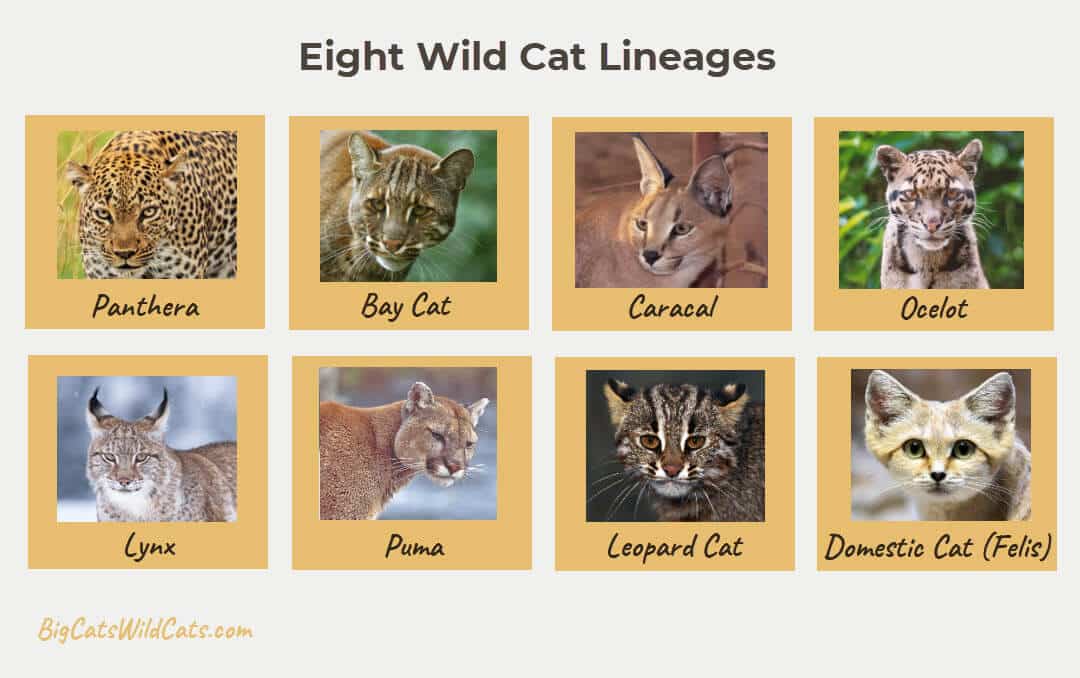
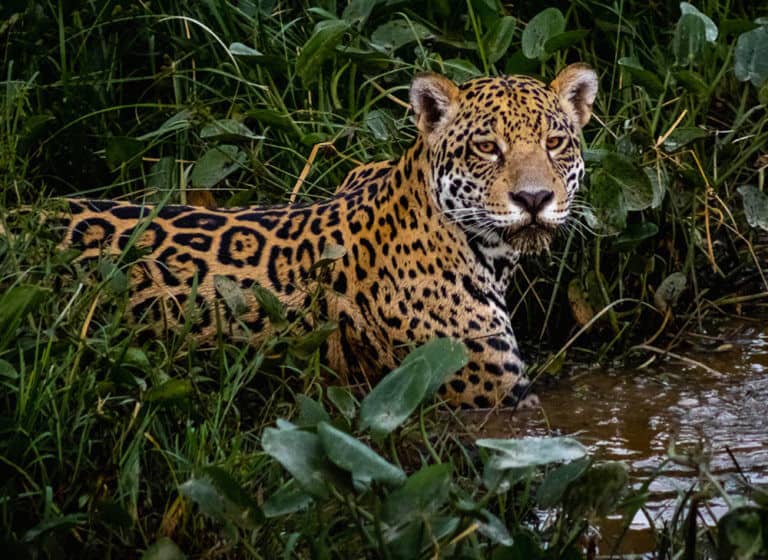
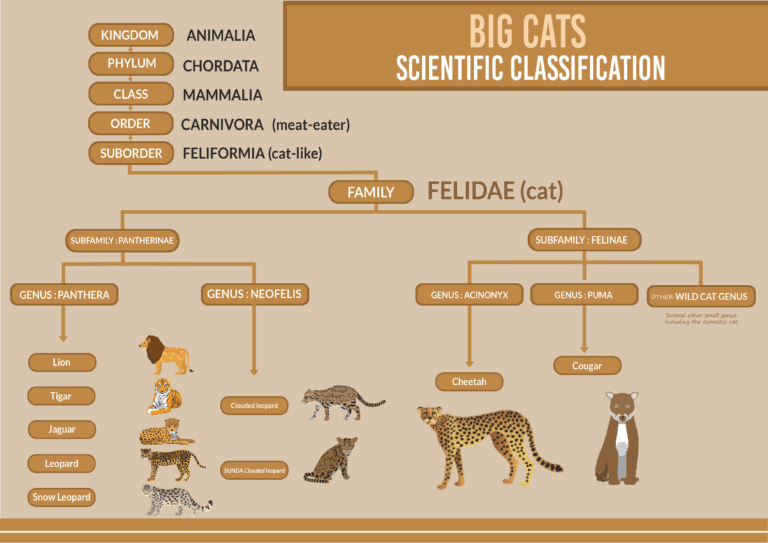
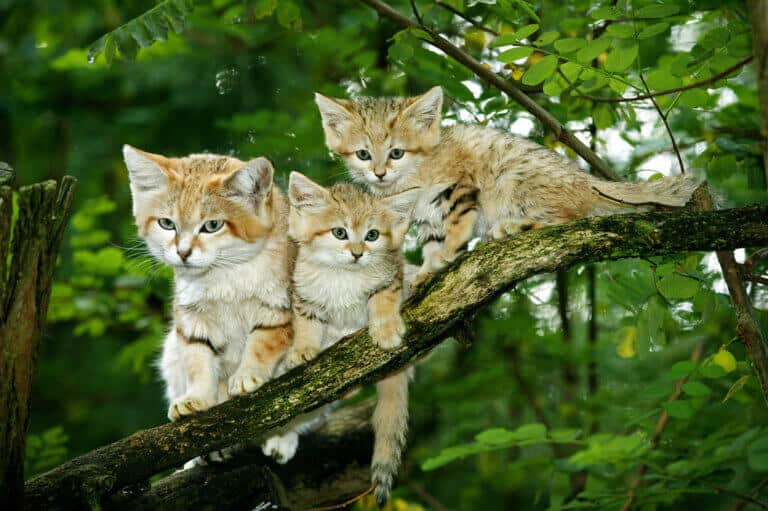
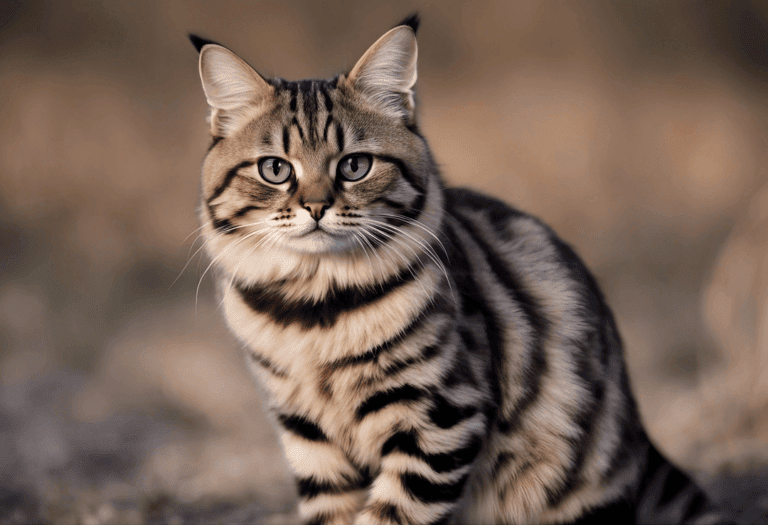

0 Comments